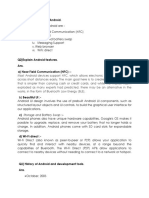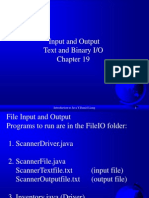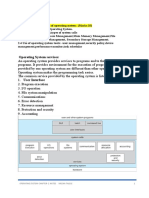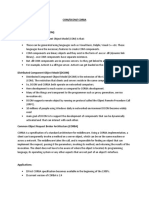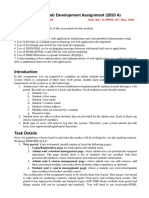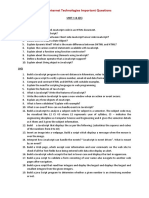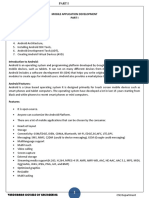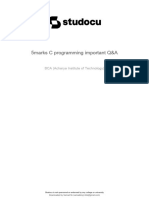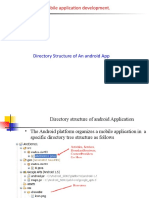0% found this document useful (0 votes)
796 views5 pagesAndroid Project Directory Structure
The document discusses the internal details of an Android application, including activities, the R.java file, resources, and the manifest file. Activities provide the interface for user interaction and contain lifecycle methods. The R.java file auto-generates IDs for resources. Resources include layouts, images, and strings. The manifest file declares app components, permissions, and API usage.
Uploaded by
tanveer MullaCopyright
© © All Rights Reserved
We take content rights seriously. If you suspect this is your content, claim it here.
Available Formats
Download as PPTX, PDF, TXT or read online on Scribd
0% found this document useful (0 votes)
796 views5 pagesAndroid Project Directory Structure
The document discusses the internal details of an Android application, including activities, the R.java file, resources, and the manifest file. Activities provide the interface for user interaction and contain lifecycle methods. The R.java file auto-generates IDs for resources. Resources include layouts, images, and strings. The manifest file declares app components, permissions, and API usage.
Uploaded by
tanveer MullaCopyright
© © All Rights Reserved
We take content rights seriously. If you suspect this is your content, claim it here.
Available Formats
Download as PPTX, PDF, TXT or read online on Scribd
/ 5















